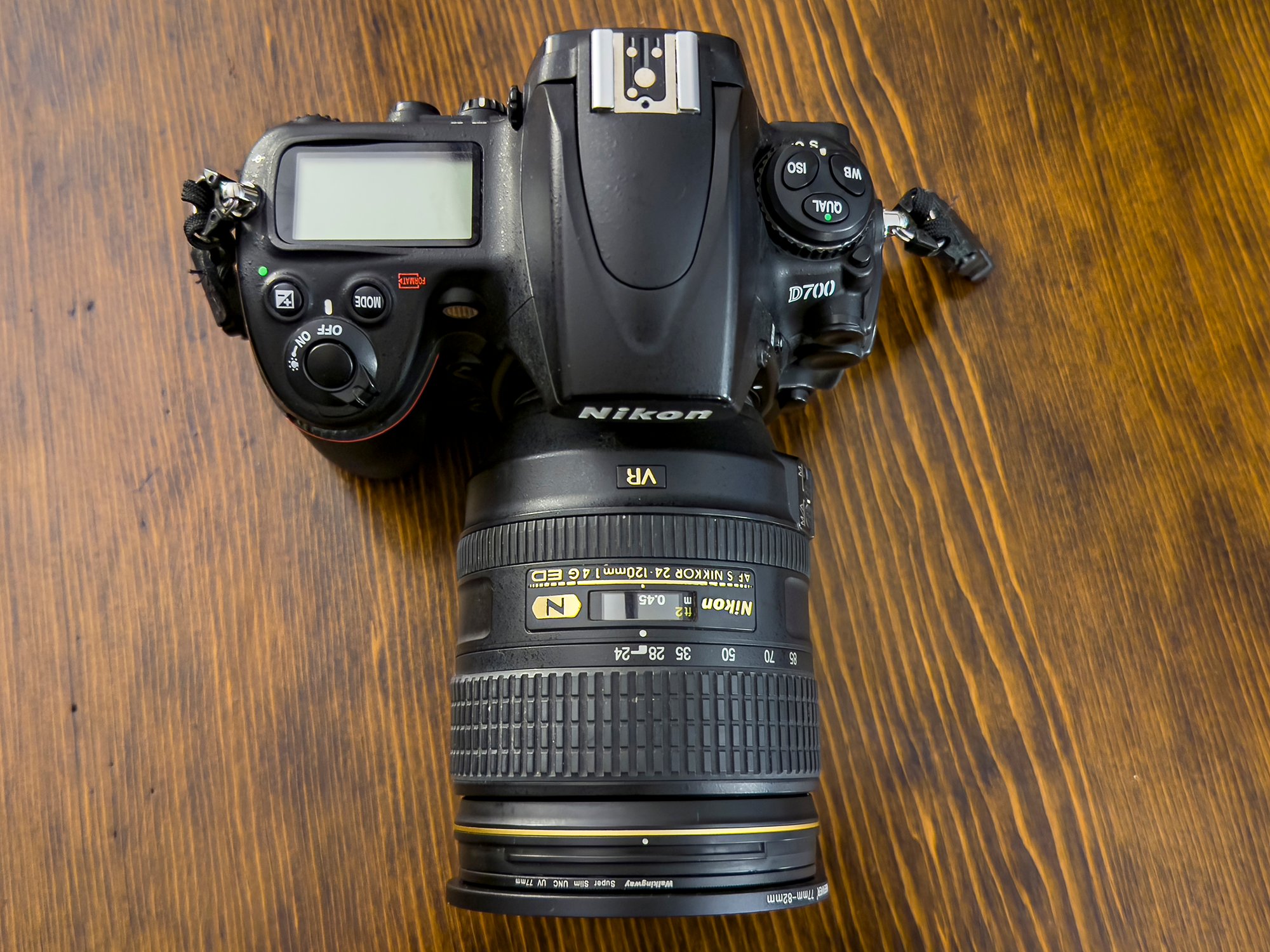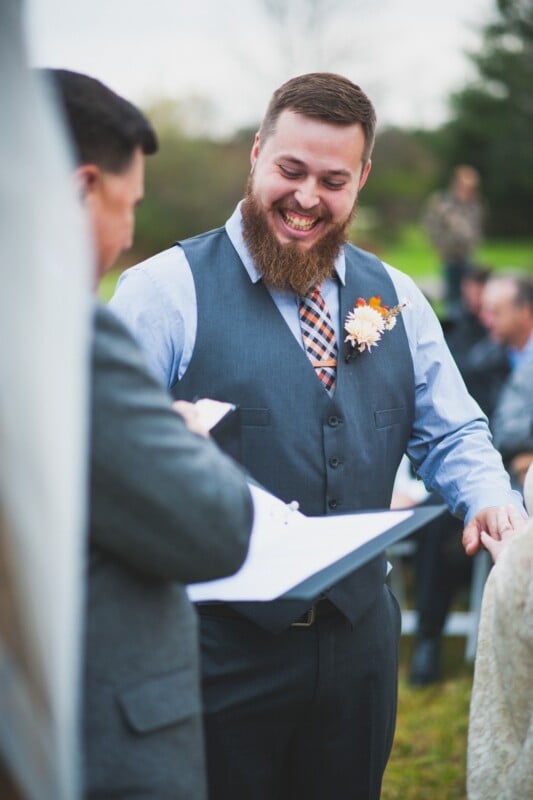Revisiting Nikon’s Legendary D700 DSLR 15 Years After Its Release

My first digital ILC (interchangeable lens camera) was the Nikon D40, which I purchased during my senior year of high school in late 2007. That camera was followed by the Canon T2i (550D), which I bought in 2010, primarily because of Canon’s significantly more advanced video features; I have always been an active filmmaker as well as a photographer. Like most people, my first two lenses for each of these cameras were the kit 18-55mm zoom and a cheap nifty-fifty prime lens, so the cost of switching systems wasn’t exactly high.
I used the Canon T2i for several years, making short films and learning and practicing photography. It wasn’t until 2013 that I replaced the Canon when I purchased a used Nikon D700 — my first full-frame digital camera. It was not only the best camera I had ever used, but eventually, I would come to regard it as my favorite DSLR Nikon had ever made.

Author’s Note: This is a retrospective review of the Nikon D700, but also a comparison with one of its successors, the Nikon D810. I did this because I think it highlights some of the camera’s positive attributes, as well as some of its deficiencies. Also, the D810 happens to be the camera I replaced my D700 with.
The Nikon D700 was a professional full-frame DSLR released in July 2008. It sported the same 12.1-megapixel, Nikon-made sensor as 2007’s Nikon D3, making it only the second full-frame digital camera produced by the company. Before their release, Canon dominated the DSLR market, releasing its first full-frame camera in 2002 with the Canon EOS-1Ds. Nikon was no minor figure in the camera market by any means — after all, the release of the D1 in 1999 was the launching point for the rise of mainstream digital cameras — but the D3, and particularly the D700, took things to another level.

The D3/D700’s incredible low-light ability, advanced 3D Focus Tracking, and phenomenal dynamic range exceeded anything from Canon, Pentax, Sony/Konica Minolta, or anyone else on the market by a considerable margin. The top-ranked non-medium format cameras on DXOMark in 2008 were the Nikon D3X, Nikon D3, and Nikon D700, respectively — with the Nikon cameras’ low-light scores blowing anything else on the market out of the water, medium format included. Canon wouldn’t best the D700 until late 2011 with its EOS-1Dx, while in the same year, Sony would eek past with its NEX-7 and Pentax with its K5. The D3X would remain on top until the release of the D4 in January 2012, followed by the D800 and D800E in February.
Over the years since I purchased my D700, I have also owned the Nikon D90, D610, D5300, D7100, D7200, D7500, and D810. The latter is, by virtually every account, a superior camera. It bests the D700 in dynamic range, high ISO performance, resolution, and many other features like dual card slots and superior live-view implementation. The D810 replaced my D700 as my workhorse camera for virtually all applications, and had I not transitioned to the Z system, the D850 surely would have taken its spot one day. Subjectively, the D850 is probably the best DSLR ever made — by anyone.

But there’s a reason I never sold my D700. Over 200,000 shutter actuations later and something about it has kept me coming back to it, especially when I revisit old files shot with it. It has also served faithfully as my secondary or backup camera, though my collection of F-mount lenses is ever dwindling since the Z lenses blow them out of the water in virtually every way.
I am far from the only person who regards the D700 as a legendary model in the pantheon of digital camera history. To this day, I see many comments in forums and threads with people discussing how they still have or use theirs. There are even Facebook groups solely dedicated to “The Legend.” So, what is it about this over-fifteen-year-old camera that has caused so many people to fall into such seemingly unconditional love?
I can only speak for myself regarding the answer.

For landscapes, the D810 has greater dynamic range, color depth, and 73% more linear resolution. For studio-controlled tripod work, I’d take the D810 any day, particularly because it’s much better for live-view macro and tilt-shift work. But resolution, in and of itself, is not the most compelling factor for me. I rarely print beyond 16×24 or so, and 12MP is far more than needed for the web. Printing is often used as an excuse for why someone needs a very high-resolution camera, but the reality is that — aside from very finely textured papers or those intended to be viewed from several inches away — resolution is far less critical for printing than many people suggest.

The Nikon D810 truly shines where it’s most at home: either in good light or on a tripod. Focus accuracy is utterly critical at that resolution, and the high number of pixels per angle-of-view means higher shutter speeds are required for handheld work. The significantly smaller pixel pitches also mean that your lenses must be among the best out there, and most of the Nikkor F lenses are simply not up to the task wide open. Only some of the newest Nikkors, as well as most of the Sigma Art, Voigtlander APO, Zeiss Otus (and some Zeiss Classic/Milvus), and the newest Tamron lenses, are up to the challenge. Conversely, the D700 can safely use a far wider variety of lenses, including some older AF/AF-D Nikkors, without optical deficiencies becoming nearly as apparent.


For landscape photography, there is no question that the D810 takes the cake. Its low native ISO of 64 combined with about 2 to 2.5 more stops of dynamic range and impeccable highlight latitude places it among the best options out there. That remains true even among modern cameras — it’s almost as though we hit the dynamic range ceiling a decade ago (we did).
But, for portraits, the rendering of the D700 files just looks right. Whether we are talking about color rendition or just a general unquantifiable “feel” of the files, I have to work much harder on with the D810 to achieve what I could with the D700. I imagine that, on some level, this is related to the underlying design of the sensor itself; the D700’s 12MP sensor is one of the last sensors actually made by Nikon (the 16MP sensor in the D4 and Df was the last). While I don’t put much importance into who made what sensor — most modern Nikon sensors are still designed by Nikon, despite being produced by Sony Semiconductor — sheer logic would seem to suggest that it does make a difference on some level.

If you move from the D700 to the D810 (or D850 or Z7), one of the first things you’ll notice when you open the RAW files is how much flatter the images are compared to the D700. This, perhaps, may have something to do with why it produces such pleasing portraits with far less work. It’s also a consequence of its reduced dynamic range — the ability to describe a larger limit of luminance values with smooth tonal transitions consequently results in “flatter” images. Finer transitions between areas of high-frequency detail and the ability to discern between distinct but very similar luminance values result in more globally muted images. Images we perceive as “high contrast” typically have very dark and very bright zones with harsher transitions between the various luminance values.

Flatter files like this are not a bad thing; quite the opposite. It’s much easier to push saturation and contrast into the image but much more challenging to pull it back while still retaining natural transitions since you’re trying to compress data back in. You may be able to pull the saturation or contrast sliders back, obviously, but you can’t create smooth tonal detail and discrete luminance values if they were never captured to begin with. In short, it’s easier to work with an additive rather than a subtractive process.
One thing I really love about the D700 over any of Nikon’s more recent DSLRs is its RGB metering system. The camera lacks the integration of highlight priority metering that the later models have, but in truth, I work 90% in matrix and 10% with the spot meter. Something about the D700’s 1005-pixel sensor seems to simply just get it right, primarily with matrix metering. It appears to bias exposure toward the focus point more than the newer sensors, which seem to lean closer to an overall average. Think of it like the difference between 8mm center-weighted versus 12mm center-weighted meter; if the D810 places 40% “importance” on the focus point in matrix mode, the D700 places more like 60%.

The D700 is not without its shortcomings, which is to be expected from a camera over a decade old. It only has a single card slot (CompactFlash). Live view can only be accessed via turning the sub-dial on top, rather than the LV button which has been the standard since the D800. Perhaps the most frustrating is that Auto ISO can only be toggled on and off via menu-diving. The D800 fixed this, allowing you to simply use the ISO button + front control dial. The viewfinder only has 95% coverage, though, in practice, I have never found this to be an issue — you can simply crop ever so slightly if there are unwanted intrusions into the frame. And, of course, there is no video, but I have never bought a Nikon pretending to even care about its video features.

The D700 is something of a timeless masterpiece. The term “best” is inherently subjective, and its definition is something I grapple with regularly when working on any of the numerous “best so-and-so” guides here at PetaPixel. Best at what? Best for what? Does its cultural or technological impact factor in? This isn’t a conundrum exclusive to technology — what constitutes the “best” movies? Are your favorite films also your picks for the best films? In my opinion, no; the two are separate, though they often overlap. In that case, the Nikon D850 is the best DSLR ever made, while the D700 is my favorite.
The D700 may not be the apex in any specific category — it is bested in resolution and high ISO performance by, well, almost all modern full-frame cameras. Many of today’s mirrorless cameras, with their massive AF coverage and subject detection modes like eye-AF and animal-AF, outclass it in autofocus precision and tracking, not to mention features like in-body image stabilization. Probably any APS-C or full-frame camera on the market has more dynamic range, and it is overshadowed in build quality, handling, and weather-sealing by cameras like the Nikon D3-D6 and Z9. However, that comes at the expense of bulk and weight.

It wasn’t until the Nikon Z8, released earlier this year that the company was finally able to have a second “D700 moment.” After all, the D700 was essentially a miniaturized D3, and that’s precisely what the Z8 is to the flagship Z9.




Arguably, the Nikon D700 is the greatest and most timeless amalgam of radical innovation and transcendent versatility — even to this day, it’s capable of tackling virtually anything you throw at it, even in low light. Certainly, earlier models from Nikon and others were more substantial to the development of the digital landscape — like the original Nikon D1 — but not many, if any, of those can still keep pace with today’s technology. The D700, however, is still as capable as most photographers require. Perhaps that’s why it remains so beloved over a decade and a half later.



